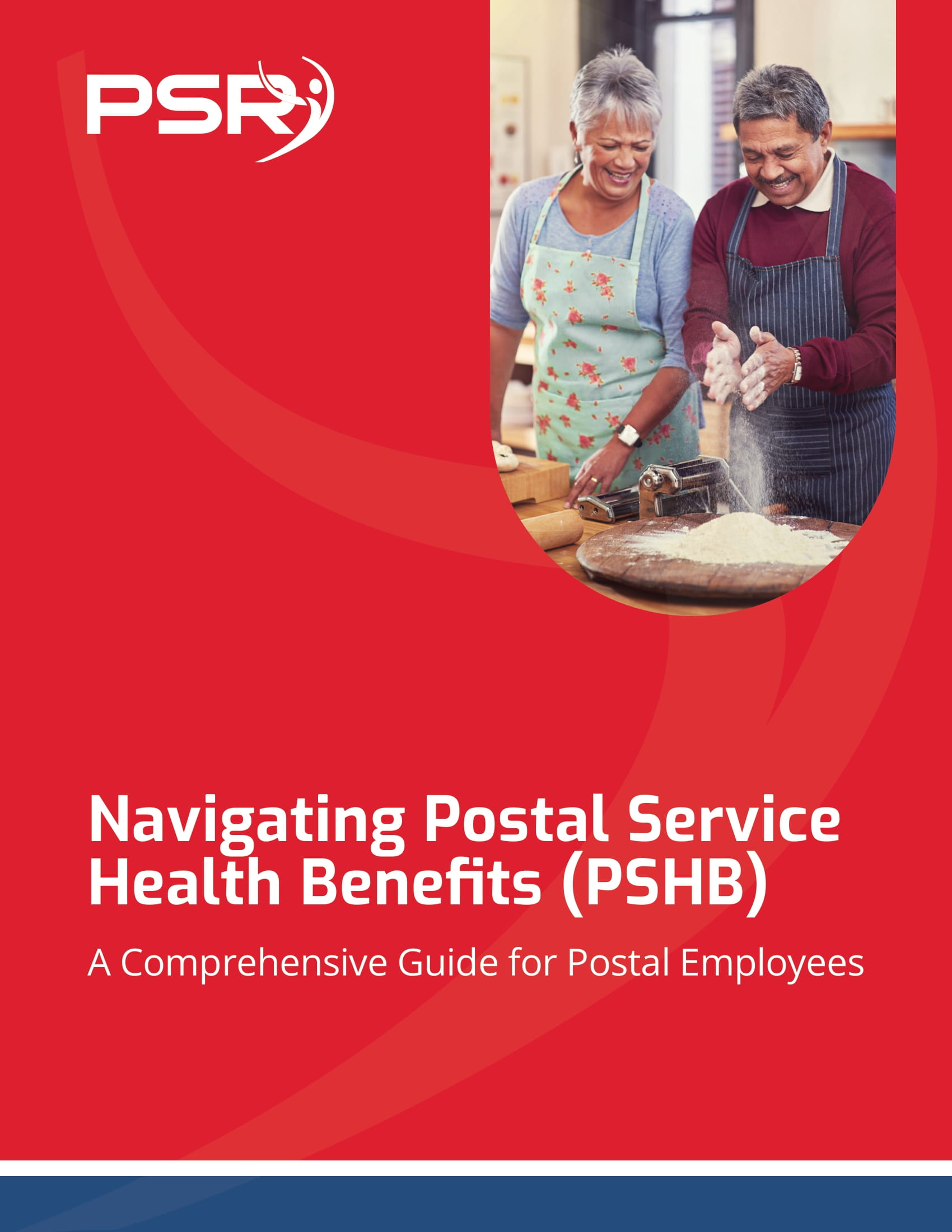Key Takeaways
-
In 2025, the Postal Service Health Benefits (PSHB) program replaces FEHB for all USPS employees and retirees, with Medicare Part B enrollment now required for many.
-
Retirement planning now involves navigating new plan options, cost structures, and prescription drug coverage changes.
Understanding the Shift: From FEHB to PSHB
As of January 1, 2025, a significant change has taken place for postal workers. The familiar Federal Employees Health Benefits (FEHB) Program is no longer the source of health insurance for Postal Service employees and retirees. Instead, the Postal Service Health Benefits (PSHB) program has fully taken effect.
The PSHB program is part of a broader initiative outlined in the Postal Service Reform Act of 2022. This transition affects your retirement plans, healthcare coordination with Medicare, and how you evaluate benefit choices.
- Also Read: FERS Annuities Are Rising—What Federal Employees Should Know About the New Changes
- Also Read: Why FAA Employees Are Taking Advantage of Special Programs to Retire Earlier Than Ever
- Also Read: Military Families Are Taking Advantage of New Policy Changes to Get the Most from TriCare and FEHB
What Makes PSHB Different in Retirement
When you retire from the USPS in 2025 or beyond, your health coverage is through the PSHB program, not FEHB. Here are the key ways PSHB changes how you prepare for and experience retirement:
1. Automatic Enrollment and Plan Transition
If you were enrolled in FEHB as of late 2024, you were automatically transitioned to a comparable PSHB plan in 2025. The new plan likely offers similar coverage but operates under different rules. While this automatic switch helps avoid coverage lapses, you still need to:
-
Review the details of your new PSHB plan carefully.
-
Compare it against other available PSHB plans during Open Season (November to December).
-
Make changes if your current plan no longer fits your needs.
2. Medicare Part B Now Plays a Bigger Role
If you’re Medicare-eligible, there are new requirements that directly impact your retirement healthcare decisions. You must enroll in Medicare Part B to maintain full PSHB coverage—unless you qualify for an exemption.
Exemptions include:
-
Retirees who officially retired on or before January 1, 2025
-
Active employees aged 64 or older as of January 1, 2025
-
Those living abroad or receiving VA or Indian Health Services care
For everyone else, Medicare Part B is now mandatory to retain access to full PSHB benefits. If you delay enrollment, you may lose access to certain benefits within the plan.
Changes to Prescription Drug Coverage
In 2025, the PSHB program integrates Medicare Part D coverage for eligible retirees through an Employer Group Waiver Plan (EGWP). This means:
-
You automatically get prescription drug coverage if you’re enrolled in Medicare and a PSHB plan.
-
There’s a $2,000 annual out-of-pocket cap on prescription drug costs in 2025.
-
You can opt out of this coverage, but doing so removes drug coverage from your PSHB plan altogether.
It’s critical to understand that opting out can have lasting effects. Re-enrollment into PSHB drug coverage is extremely limited after opting out.
What Stays the Same After Retirement
Despite the shift to PSHB, many of the basic structures around retirement from the USPS remain consistent:
-
You still qualify for a FERS annuity if you’re under the Federal Employees Retirement System.
-
Thrift Savings Plan (TSP) withdrawals and RMDs remain under the same federal guidelines.
-
FEGLI life insurance and FEDVIP dental and vision coverage remain separate from PSHB and continue unchanged.
This means retirement planning must now factor in a mix of old and new rules.
Cost Structures Under PSHB in 2025
In general, PSHB plans follow a similar model to FEHB when it comes to premium contributions, copayments, and deductibles. However, there are important shifts to consider:
Premium Contributions
The government continues to cover about 70% of your plan’s total premium. Your share depends on the specific plan and coverage level (Self Only, Self Plus One, or Self and Family).
In 2025, average monthly annuitant premiums are:
-
Around $241 for Self Only
-
Roughly $521 for Self Plus One
-
About $567 for Self and Family
These figures vary based on the plan you choose, and they may differ significantly from your previous FEHB plan costs.
Deductibles and Out-of-Pocket Maximums
Most PSHB plans in 2025 offer:
-
In-network deductibles ranging from $350 to $1,500
-
Out-of-pocket maximums up to $7,500 for Self Only
-
Higher limits for family coverage, reaching $15,000 or more
These thresholds reset each calendar year. Some plans reduce these costs if you’re enrolled in Medicare Part B.
Your Retirement Timeline in 2025 and Beyond
If you’re planning to retire from the Postal Service this year or soon after, here’s how the timeline looks:
-
Before Retirement: Ensure your Medicare enrollment is timely if you’re 65 or older.
-
At Retirement: You’ll retain your PSHB coverage into retirement, but your premium share may increase slightly.
-
After Retirement: You’ll need to continue paying your share of premiums directly if it’s no longer deducted from your paycheck.
You should also keep in mind the Thrift Savings Plan’s Required Minimum Distribution (RMD) rules. As of 2025, RMDs begin at age 73. Planning your withdrawals carefully can help reduce tax impacts.
Coordinating PSHB with Medicare
Once you’re enrolled in both Medicare and a PSHB plan, your benefits are coordinated to reduce out-of-pocket costs. Here’s what that means:
-
Medicare becomes your primary payer.
-
Your PSHB plan acts as secondary coverage, often covering deductibles and coinsurance.
-
Many PSHB plans waive cost-sharing or reimburse Part B premiums when you’re enrolled in both.
This coordination can help you save significantly on healthcare costs in retirement.
What You Can Do During Open Season
Each year, from November to December, Open Season gives you the chance to evaluate your plan options. Even if you’ve been auto-enrolled in a PSHB plan, consider these steps:
-
Compare Plans: Use plan comparison tools or brochures to assess your costs and benefits.
-
Check Medicare Integration: Some plans offer better coordination or added perks for those with Medicare.
-
Review Family Needs: If your spouse or dependents are on your plan, make sure the plan still meets their coverage requirements.
Failing to review your options can result in higher costs or limited coverage.
Long-Term Retirement Healthcare Planning
Your retirement isn’t just about this year—it’s about the next 20 to 30 years. As a Postal Service retiree in 2025, your healthcare choices now can affect long-term affordability and coverage. To stay ahead:
-
Monitor future changes to PSHB or Medicare law
-
Adjust your plan during Open Season if your health needs change
-
Keep documents and enrollment confirmations organized for future reference
Healthcare will likely remain your biggest retirement expense. Understanding the new PSHB landscape gives you more control over managing it.
Why Your 2025 Retirement Plan Needs a Fresh Look
The shift from FEHB to PSHB means 2025 is the right time to re-evaluate your retirement plan. Your healthcare costs, coverage options, and Medicare decisions now play a larger role in how financially stable your retirement will be.
A careful review of your new PSHB plan, combined with timely Medicare enrollment, can protect you from unnecessary costs and ensure a smoother transition into retirement.
Get the Right Advice for a Confident Retirement
Navigating the retirement system as a Postal worker in 2025 requires staying updated and making informed choices. The change from FEHB to PSHB brings new rules, timelines, and financial implications. A little planning now goes a long way toward long-term peace of mind.
For help reviewing your benefits or understanding how your plan coordinates with Medicare, speak with a licensed agent listed on this website for personalized advice.









